SAMPLING SOME SOFTWOODS
Softwoods aren’t weaker than hardwoods. Softwoods come from coniferous trees such as cedar, fir, and pine and tend to be somewhat yellow or reddish. Because most coniferous trees grow fast and straight, softwoods are generally less expensive than hardwoods.
TIP
It’s also relatively easy to find sustainably grown softwoods (woods grown on tree farms to ensure an endless supply of wood); this means you’re not contributing to the deforestation of the world and will always have a supply of wood for your projects.
Following is a list of common softwood varieties and their characteristics.
CEDAR
The most common type of cedar is the western red variety. Western red cedar, as its name implies, has a reddish color to it. This type of wood is relatively soft (1 on a scale of 1 to 4), has a straight grain, and has a slightly aromatic smell. Western Red cedar is mostly used for outdoor projects such as furniture, decks, and building exteriors because it can handle moist environments without rotting. Western red cedar is moderately priced and can be found at most home centers.
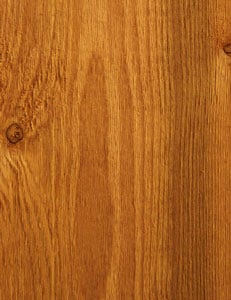
Cedar is one of the most aromatic woods
(hence, the cedar chest) and is strong enough
to endure the elements, so it’s great for decks
and patio furniture.
FIR
Often referred to as Douglas Fir, this wood has a straight, pronounced grain, and has a reddish brown tint to it. Fir is most often used for building; however, it’s inexpensive and can be used for some furniture-making as well. It doesn’t have the most interesting grain pattern and doesn’t take stain very well, so it’s best to use it only when you intend to paint the finished product. Douglas fir is moderately strong and hard for a softwood, rating 4 on a scale of 1 to 4.
This wood is worth mentioning because it is very common at your local home center and it’s so inexpensive you’ll probably be tempted to make something with it.
PINE
Pine comes in several varieties, including Ponderosa, Sugar, White, and Yellow, and all of them make great furniture. In some areas of the country (especially southwest United States), pine is the wood to use. Pine is very easy to work with and, because most varieties are relatively soft, it lends itself to carving.
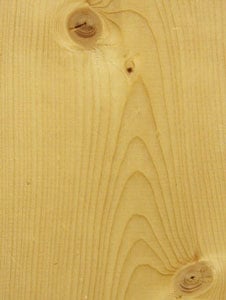
Pine is commonly used in furniture
because it’s easy to shape and stain.
Pine generally takes stain very well (as long as you seal the wood first), although Ponderosa pine tends to ooze sap, so be careful when using this stuff. Pine is available from most home centers, but it’s often of a lesser grade than what you can find at a decent lumberyard.
REDWOOD
Like cedar, redwood is used mostly for outdoor projects because of its resistance to moisture. Redwood (California redwood) is fairly soft and has a straight grain. As its name suggests, it has a reddish tint to it. Redwood is easy to work with, is relatively soft (2 on a scale of 1 to 4), and is moderately priced. You can find redwood at your local home center.
HOMING IN ON HARDWOODS
Most woodworkers love to work with hardwoods. The variety of colors, textures, and grain patterns makes for some beautiful and interesting-looking furniture. The downside to hardwoods is their price. Some of the more exotic species can be too expensive to use for anything more than an accent.
Some hardwoods are becoming very hard to find and are being harvested without concern to their eventual extinction (Brazilian rosewood comes to mind). Not only is this hard on the environment, it drives the price of the wood so high that making furniture out of it is out of the question for most woodworkers. If you can, try to buy wood from a sustainable forest (commercial tree farms that ensure the supply of the wood). Check out the National Hardwood Lumber Association for ways to support sustainable forestry.
Following is a list of common hardwoods and their characteristics.
ASH
Ash is a white to pale brown wood with a straight grain. It’s pretty easy to work with (hardness of 4 on a scale of 1 to 5) and takes stain quite nicely, but ash is getting harder and harder to find. You won’t find ash at your local home center — it’s only available from larger lumberyards. Ash is a good substitute for white oak.
BIRCH
Birch comes in two varieties: yellow and white. Yellow birch is a pale yellow-to-white wood with reddish-brown heartwood, whereas white birch has a whiter color that resembles maple. Both types of birch have a hardness of 4 on a scale of 1 to 5. Birch is readily available and less expensive than many other hardwoods. You can find birch at many home centers, although the selection is better at a lumberyard.
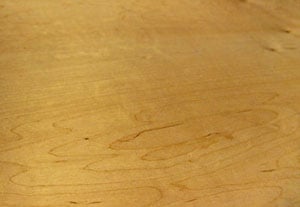
Birch is stable and easy to work with. However, it’s hard to stain because it can get blotchy, so you might prefer to paint anything that you make with birch.
CHERRY
Cherry is a very popular and all-around great wood; easy to work with, stains and finishes well with just oil, and ages beautifully. Cherry’s heartwood has a reddish-brown color to it and the sapwood is almost white. Cherry has a hardness of 2 on a scale of 1 to 5. This is a very common wood for furniture-making and is available from sustainably grown forests. You won’t find cherry at your local home center, so a trip to the lumberyard is necessary if you want to use it. Because it’s in demand, cherry is getting somewhat expensive compared to other domestic hardwoods, such as oak and maple.
MAHOGANY
One of the great furniture woods, mahogany (also called Honduran mahogany) has a reddish-brown to deep-red tint, a straight grain, medium texture, and a hardness of around 2 on a scale of 1 to 5. It takes stain very well and looks great with just a coat (or 10) of oil.
The only drawback is that mahogany isn’t being grown in sustainable forests. Forget going to your home center to get some — the only place to find mahogany is a decent lumberyard (and it’ll cost you).
MAPLE
Maple comes in two varieties: hard and soft. Both varieties are harder than many other woods; hard maple is so hard (a 5 on a scale of 1 to 5) that it’s difficult to work with. Soft maple, on the other hand, is relatively easy to work with. Because of their fine, straight grain, both varieties are more stable than many other woods. They also tend to be less expensive than other hardwoods. You won’t find maple at your local home center, but most lumberyards have a good selection of it.
OAK
Oak is one of the most used woods for furniture. Available in two varieties — red and white — oak is strong (hardness of about 4 on a scale of 1 to 5) and easy to work with. White oak is preferred for furniture-making because it has a more attractive figure than red oak. White oak is also resistant to moisture and can be used on outdoor furniture.
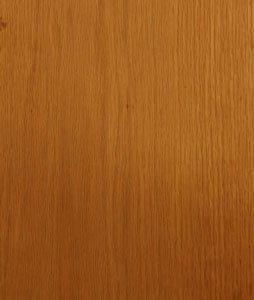
This is one wood that can be found quarter-sawn (the most stable cutting option available). In fact, quarter-sawn white oak is less expensive than some other hardwoods, like cherry. The grain has a beautiful “ray flake” pattern to it. Red oak can be found at most home centers, but if you want white oak, make a trip to the lumberyard.
POPLAR
Poplar is one of the less expensive hardwoods. It’s also fairly soft (1 in hardness on a scale of 1 to 5), which makes it easy to work with. Poplar is white with some green or brown streaks in the heartwood. Because poplar is not the most beautiful wood, it’s rarely used in fine furniture, and if it is, it’s almost always painted. Poplar can be a good choice for drawers (where it won’t be seen) because it is stable and inexpensive. You can find poplar at larger home centers, but a lumberyard will have a better selection.
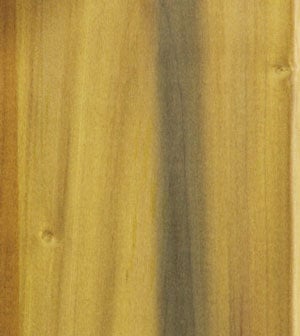
TEAK
Teak is becoming rarer as the days go on, but it is the staple for fine outdoor furniture. Teak is highly weather-resistant and beautiful (not to mention expensive — can you believe almost $24 a board foot?). Teak has an oily feel and a golden-brown color. It rates a 3 on a scale of 1 to 5 for hardness and is only available from larger lumberyards and specialty suppliers.
WALNUT
With a hardness of about 4 on a 1 to 5 scale, walnut is a rich brown wood that’s easy to work with. Unfortunately, walnut is somewhat expensive (usually around $8 a board foot), and finding large boards for big projects is getting difficult. In spite of this, walnut is still a great wood to work with and lends itself nicely for use as accents and inlays to dress up a project. You won’t find walnut at your local home center; you may need to special order it from a lumberyard if you want a large quantity.
